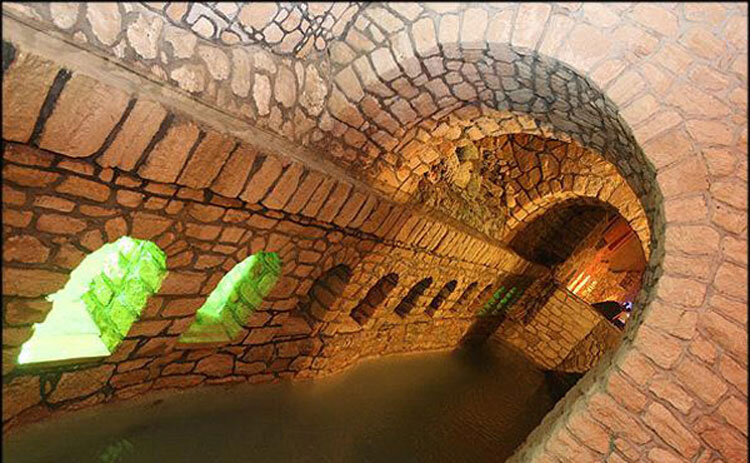‘World’s longest qanat’ being prepared for public visit

TEHRAN –The recently-restored Qanat of Zarch, known as the world’s longest subterranean aqueduct in central Yazd province is being prepared for the public visit, the provincial tourism chief has said.
Tourists, enthusiasts and experts will soon be able to visit this aqueduct, which can be the most important tourist attraction of the region, Ahmad Akhundi explained on Friday.
With the revival of the 3,000-year-old aqueduct and the nearby historical castle, tourism in this area will be developed, the official added.
The Qanat of Zarch originated from the village of Fahraj stretches some 80 km across the northeast of Yazd and it runs at the depth of 30-40 m beneath the surface. It reaches Zarch, where the water is used for irrigation in the lower lands.
Based on a survey, some 37,000 out of a total of 120,000 ancient subsurface water supply systems, qanats, are still in use in Iran in arid and semi-arid regions of the country.
A selection of eleven qanats is collectively been inscribed on the UNESCO World Heritage list under the title of Persian Qanat. Each of them epitomizes many others in terms of geographic scopes, architectural designs, and other motives. Such subterranean tunnels provide exceptional testimony to cultural traditions and civilizations in desert areas with an arid climate.
Generally, each qanat comprises an almost horizontal tunnel for collecting water from an underground water source, usually an alluvial fan, into which a mother well is sunk to the appropriate level of the aquifer.
UNESCO has it that “The qanats provide exceptional testimony to cultural traditions and civilizations in desert areas with an arid climate.”
Such constructions are still in practice, many of which were made from the 13th century onwards. Yazd is among ancient cities which have applied this concept to make urban settlements possible in central Iran.
The earliest water supply constructions in Yazd are believed to date from the Sassanid era (224 to 651 CE) while many others have been continually repaired and used over time, most surviving ab-anbars can be today traced to the late Safavid and Qajar periods.
When it comes to landscape architecture, ab-anbars and wind towers play a pivotal role in enriching the Yazd skyline.
In July 2017, the historical structure of the city of Yazd was named a UNESCO World Heritage. Wedged between the northern Dasht-e Kavir and the southern Dasht-e Lut on a flat plain, the oasis city enjoys a very harmonious public-religious architecture that dates from different eras.
Yazd is usually referred to as a delightful place to stay, or a “don't miss” destination by almost all of its visitors. It teems with mud-brick houses that are equipped with innovative badgirs (wind catchers), atmospheric alleyways, and many Islamic and Iranian monuments that shape its eye-catching city landscape.
It is a living testimony to the intelligent use of limited available resources in the desert for survival.
Buildings are built of earth. The use of earth in buildings includes walls and roofs through the construction of vaults and domes. Houses are built with courtyards below ground level, serving underground areas. Wind catchers, courtyards, and thick earthen walls create a pleasant microclimate.
Partially covered alleyways, together with streets, public squares, and courtyards, contribute to a pleasant urban quality. The city escaped the modernization trends that destroyed many traditional earthen cities.
It survives today with its traditional districts, the qanat system, traditional houses, bazaars, hammams, water cisterns, mosques, synagogues, Zoroastrian temples, and the historic garden of Dolat-Abad. The city enjoys the peaceful coexistence of three religions: Islam, Judaism, and Zoroastrianism.
ABU/
Leave a Comment